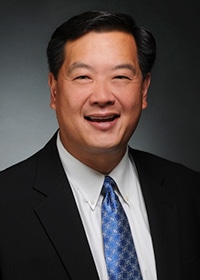
How to diagnose the correct change to improve your organization’s performance
By: Jeff Chan
I just started working with an R&D team at a large packaging company that had fallen on challenging times. At one time, the R&D team was thriving and developing breakthrough product after product. They were the original developers of an innovative packaging product, but in recent years they’ve struggled to develop similar products.
The R&D leader wanted to address this performance issue by restructuring the R&D organization. He felt that by restructuring the team, they would be able to innovate and come up with new ideas. In addition to restructuring, he also wanted to train the team on the latest skills and tools in innovation – all good things, but this wasn’t the problem that was causing their issues.
In one of my first visits to their main facility, I entered through the employee entrance. At the security desk was a wall of pictures of license plates – there must have been over a few dozen license plates shown on this wall. I asked the security guard why they had all these pictures of license plates. He said that they recently implemented a new policy at their facility they found it safer for cars to back into their parking places rather than going in head first. The security guard was instructed to go around the parking lot that had over 500 cars and take pictures of the cars that did not go back into their parking place. They wanted to identify and shame the people that did not follow their new policy.
As I spoke with employees in the R&D team, they shared with me example after example of rules, policies, procedures, and measures that inhibited them of developing new ideas and products – when they did not follow the rules and policies they were “shamed” into following them. This culture focused on productivity, efficiency, and safety rather than new ideas and innovation.
Identify the root cause
Leaders trying to improve the performance of their teams look to change elements of their organization and many times turn to tangible things such as organizational restructuring, training, or new technology to solve their problems. These are all valid and good things, but many times structure, skills, or tools are not the cause of their performance problems. Identification of the root cause issue is a critical step to ensuring successful organizational change and performance improvement.
Follow these three principles to ensure you are addressing the right organizational performance issue
1. Begin with the end in mind
Stephen Covey, in his famous 7 Habits of Highly Effective People, encouraged individuals to start with a picture of success and work backward to identify what people need to do now to achieve that picture of success. This principle also applies to organizational change and performance improvement. Too often leaders become enamored with the latest fads and trends and lose sight of the goals and outcomes of the organization. Focus first on the goals and outcomes and evaluate what needs to change to achieve this end.
2. Gather input and perspective
An ancient parable tells the story of six blind men walking down a street. They happen upon an elephant, and all six blind men were touching different parts of the elephant trying to figure out what is this creature. The first man said this creature was a spear because he was holding the tusk, the second man said this creature was a snake because he was holding the trunk, and the third man said this creature was a fan because he was holding the ear. They began to argue and debate what this creature was, getting nowhere.
The moral of the story is that they were all right, but they were also all wrong because their own experiences and perspectives limited them. To understand the “whole,” they needed to talk with each other to understand rather than advocate their position as right. This principle applies as well to organizational change. Gathering input from managers and employees is critical to fully understanding the performance issue and root cause problem. Gathering perspectives on the issues will not only help you properly diagnose what needs to change, but it will also help to build the support from the employees that their voices are heard, and opinions are valued.
3. Identify what is out of alignment
I have six children and have taught four of them to drive. We have a Chevy Suburban to house this large family and have used this car to teach them to drive. Inevitably, in learning to drive this large car, they have hit curbs, potholes, and bumps in the road that has caused the wheels to get out of alignment. As the wheels are out of alignment, the car does not go straight down the road but veers to one side or the other. Additionally, the gas mileage of the car goes down because the engine has to work harder to get the car down the road.
Similarly, organizations have their own “wheels” – structure, processes, procedures, measures, tools, etc. The strategy and goals of the organization is the steering wheel that tells the organization what direction to head. If the organizational “wheels” are not aligned with the strategy and goals, the organization veers away from its intended destination. To ensure your organization is heading straight toward its goals, assess the alignment of the organization. Do these organizational elements support and enable your team to achieve the goals in the most efficient and effective means? What is getting in their way and how does it cause them to veer away from the goal?
Improving organizational performance is one of the most challenging tasks as a leader. The first step is to ensure you have accurately diagnosed the root cause issue that is inhibiting your team from performing at a high level. Follow these principles to help ensure you have accurately diagnosed the problem.
Jeff Chan teaches Change Management for the Wisconsin School of Business Center for Professional & Executive Development.
About the Instructor: Jeff Chan

Jeff specializes in working with companies to improve organizational performance and productivity through expertise in change management and business transformation. He has held general management and senior human resource positions with BP/Amoco, Hewitt, Sears, Spiegel, and for the past 10 years has been the President of Chan Management Consulting.